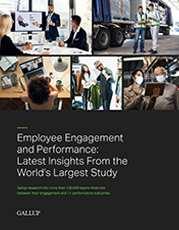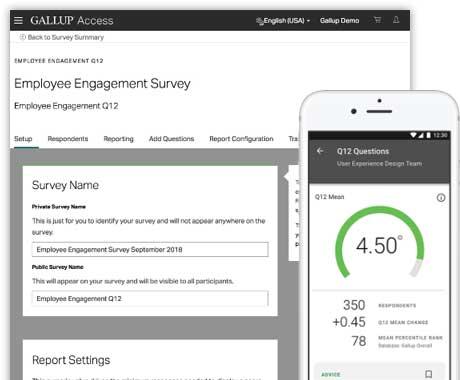Story Highlights
- The age of human capital transparency is here
- The SEC has mandated human capital disclosure for publicly traded companies
- Learn strategies for getting your people practices in order
The U.S. Securities and Exchange Commission quietly launched a revolution on Nov. 9 with a new ruling: the Modernization of Regulation S-K.
From now on, publicly traded businesses have to disclose human capital assets -- which account for 84% of an S&P 500 company's value -- in their S-1, 10-Q and 10-K reports. The SEC didn't mandate what leaders must disclose, but encouraged them to report data on employee attraction, development and retention, at the very least.
Helpfully, the International Organization for Standardization (ISO) has suggested 59 metrics big companies can use (including 10 for smaller organizations) that include things like total development and training cost, trust in leadership, and the percentage of leaders who receive leadership development. And as anyone who has filed one of those reports knows, raw numbers are not enough. The SEC wants context and future plans too.
With that in mind, consider this: Gallup has been tracking U.S. engagement -- which is directly linked to profitability, productivity, retention and a host of other key performance indicators -- for 20 years, and we've never seen average employee engagement higher than 40%. In other words, over half of the value of human capital assets simply evaporates every year.
That is not what investors want to hear. But that's what they'll learn from a whole lot of S-1, 10-Q and 10-K reports next year. So if your company is publicly traded and you don't want to spook your current and potential investors, this is what you need to do.
First, start tracking employee engagement. Your engagement is a leading indicator of your financial outcomes, which you need to know. But readers of your S-1, 10-Q and 10-K reports need to know what to expect from their investment -- and companies with an average of 9.3 engaged employees for every actively disengaged employee experience 147% higher earnings per share compared with their competition.
Just be careful with the data collection and analysis. Employee engagement is scientifically quantifiable, but some surveys have zero scientific validity. You need an approach to collection and analysis that has been repeatedly and independently proven to have scientific validity and a positive impact on business results. Otherwise, you're just generating numbers that won't do you any good, provide the assurance investors need or offer the context the SEC wants.
Second, focus on managers. They account for at least 70% of a team's engagement and are responsible for implementing human capital strategies, such as those 59 ISO recommendations -- but 82% of the time, according to Gallup research, companies name the wrong person as manager.
So there's a strong possibility that your human capital assets are in the hands of a person who wasn't properly trained to cultivate or deploy employees. The single best way to change that is to teach your managers how to coach, not boss. Coaching, unlike bossing, achieves top performance, higher retention and greater productivity -- and it accelerates human capital strategies, especially employee development. And manager/coaches are better able to operationalize whatever human capital initiatives you've got planned.
Third, commit to a development culture. Annual development events don't work. Companies spend billions on corporate training and development every year, and most executives aren't happy with their results. Nor should they be -- a Degreed/Harvard Business Publishing Corporate Learning survey found that just 37% of employees even use their company's learning system and fewer yet, 26%, use their HR or training team's learning resources.
Meanwhile, the top draw for high-quality job candidates is the chance to learn and grow, Gallup finds, especially among millennials.
If you want to do better than your competitors -- or just do better business -- your employees need ongoing development, specific to their strengths and your organization's needs. To meet this need, leaders must abandon periodic learning and invest in a culture of development. Evidence of that culture, or even a serious culture change initiative, works to your advantage. S-1, 10-Q and 10-K reports that show the kind of development approach and outcomes that disappoint most leaders aren't going to impress investors much. They may even be a red flag.
Meanwhile, improve your employee value proposition (EVP). Among the few things the SEC requested are attraction and retention numbers. Yours may look pretty good in 2020, for various reasons. Next year may be a different story. If you want it to be a marketable story, you need the best EVP you can get.
That means knowing what employees value. Gallup finds that people who use their strengths every day are 15% less likely to quit (also, three times more likely to report having an excellent quality of life and six times more likely to be engaged). And workers say the most important aspect of a job is that it "allows me to do what I do best."
If your employees strongly agree that they use their strengths and get do what they do best, you've got a winning EVP -- and probably attraction and retention stats you're proud to report. Otherwise, you might have EVP issues to fix.
Recognize how strategy alignment, individual performance, team configuration, structures and processes affect and are affected by human capital. A company isn't a machine; it's a human enterprise. And looking at the basics of business organization through a lens of the employee experience allows you to extract the most value from human capital. For instance, defining business units, roles and the relationship between them allows you to align all levels of human capital, maximizing profitability and minimizing spend. Or consider agility -- there are employee talents, mindsets, tools, systems and processes necessary for genuine agility, and incorporating them promotes an agile mentality and gets better results.
The list goes on. But reckoning with the humanity behind business basics -- and detailing the predictive analytics about human capital in SEC reports -- demonstrates sophistication and value that most businesses can't claim.
The revolution is long overdue.
Do these things, and your S-1, 10-Q and 10-K reports will not only satisfy the SEC but also prove your human capital is an asset worth investing in.
And it really will be an asset. Gallup's most recent meta-analysis finds that business units in the top quartile of employee engagement outperform bottom-quartile units with a median percent difference of 10% in customer loyalty/engagement, 18% to 43% in turnover, 23% in profitability, 14% to 18% in productivity (depending on the industry), 64% in safety incidents, 81% in absenteeism and 66% in wellbeing, among other KPIs. Another meta-analysis of 1.2 million individuals and 49,495 work units in 45 countries shows that teams that received strengths-based development achieved 19% increased sales, 29% higher profits, 59% fewer safety incidents and up to 72% less turnover.
If it takes the Modernization of Regulation S-K to achieve outcomes like those, the SEC's quiet revolution is long overdue.
Not just for investors. For you and your company. A sub-40% engagement rate tells us that companies waste an awful lot of asset value, and with it a whole lot of human potential. Putting a stop to that doesn't just revolutionize SEC reporting -- it revolutionizes the way your business works.
Start preparing for transparency:
- Dive into our proven employee engagement best practices and insights.
- Read our report, Building a Culture That Drives Performance, to learn how to create a culture built on strong values.
- Use the Gallup Access survey and learning platform to create a consistent employee experience across your organization.






